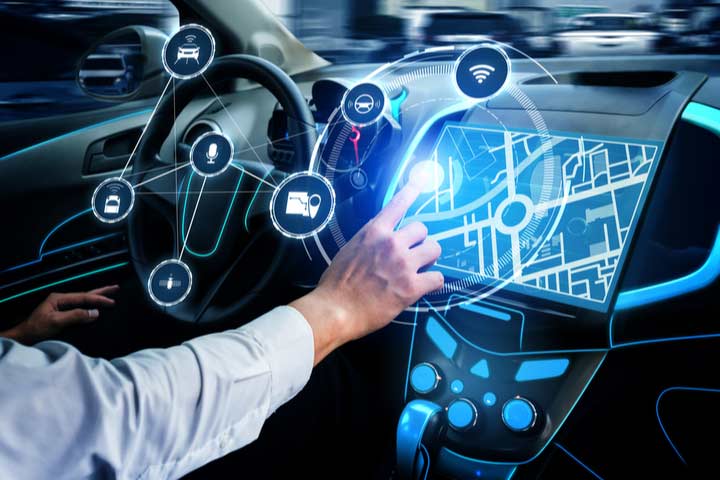1. Infotainment Systems: Infotainment systems are central to modern car technology, providing drivers and passengers with a range of entertainment and information options. These systems typically include:
-
Touchscreen Displays: Many modern cars feature touchscreen displays that serve as the control center for infotainment. These screens allow users to access various functions and settings.
-
Entertainment Options: Infotainment systems offer features like AM/FM radio, Bluetooth audio streaming, CD/DVD players, and, increasingly, integration with popular streaming services like Apple CarPlay, Android Auto, and in-house developed apps for music and video streaming.
-
Navigation: In-built navigation systems or integration with GPS apps like Google Maps or Waze help drivers find their way. Many systems offer real-time traffic updates and route recommendations.
-
Voice Control: Voice recognition technology allows drivers to control various functions without taking their hands off the wheel. This is especially useful for making calls, sending texts, or setting navigation destinations.
-
Smartphone Integration: Apple CarPlay and Android Auto enable seamless integration with smartphones. Drivers can use their phone's apps and features through the car's infotainment system.
-
Internet Connectivity: Some vehicles come with built-in Wi-Fi hotspots, allowing passengers to stay connected during the journey.
2. Connectivity Features:
-
Bluetooth Connectivity: Bluetooth technology enables hands-free calling and audio streaming, making it easy to stay connected while driving safely.
-
USB and Wireless Charging: Many cars now have USB ports and wireless charging pads for smartphones and other devices.
-
Advanced Driver Assistance Systems (ADAS): These features include lane-keeping assist, adaptive cruise control, blind-spot monitoring, and collision avoidance systems, enhancing safety and convenience.
3. Navigation Systems: Built-in navigation systems have evolved to provide more than just directions. They offer features like:
-
Real-Time Traffic Data: Navigation systems can access real-time traffic data to provide alternative routes and help drivers avoid congestion.
-
Point of Interest (POI) Search: Drivers can easily find nearby restaurants, gas stations, hotels, and other places of interest.
-
Voice Guidance: Turn-by-turn voice guidance makes it easier for drivers to follow directions without distraction.
-
Offline Maps: Some systems offer the option to download maps for offline use, which can be especially helpful in areas with poor connectivity.
4. Vehicle Connectivity and Telematics: Many modern cars also come equipped with telematics systems that offer remote connectivity. These systems often include:
-
Remote Start and Lock/Unlock: Owners can start their car remotely or lock/unlock doors using a smartphone app.
-
Diagnostic Information: Telematics systems can provide information about the vehicle's health, including warning lights and maintenance reminders.
-
Emergency Services: Some systems can automatically call for help in the event of an accident.
-
Stolen Vehicle Tracking: If a vehicle is stolen, the telematics system can help track its location.
In-car technology and infotainment systems continue to evolve rapidly, with each model year bringing new features and improvements. These technologies aim to make driving more enjoyable, safer, and connected for both drivers and passengers.




Comments (0)